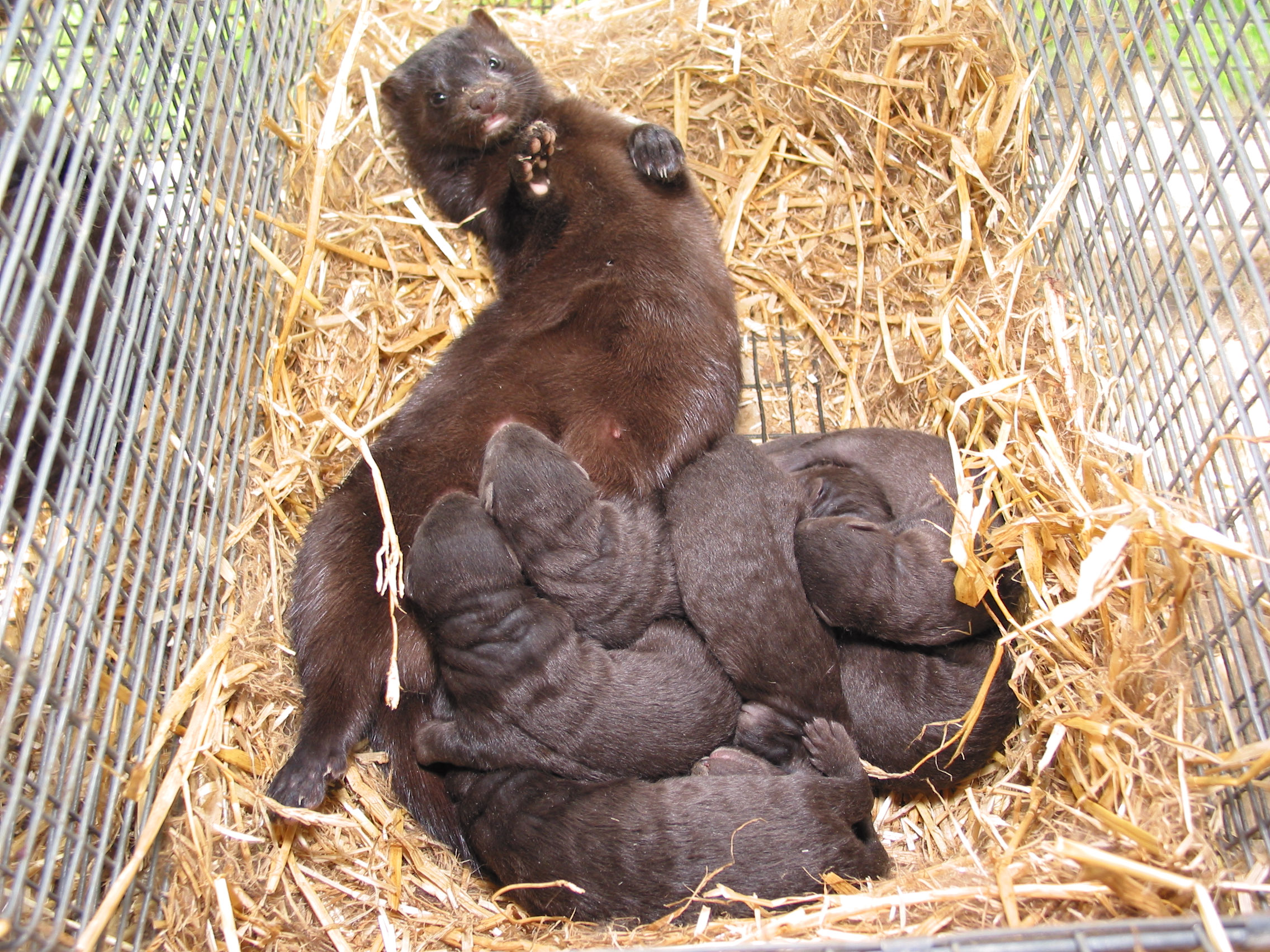Higher income through higher welfare in fur farming
Danish scientists aim to improve the economy of Danish mink production by around 500 million DKK a year by increasing the survival rate of kits while also improving animal welfare and reducing the environmental impact.

Scientists from Aarhus University are leading a new project aimed at enhancing not only the survival rate of mink kits, but also animal welfare and the efficiency of Danish mink production by improving a number of production factors.
Denmark is a global leader in the production of high-quality mink pelts. However, there is still scope for improvements in the production conditions.
- In previous studies we have demonstrated that the mortality rate of mink kits can be reduced to less than eight percent. This will increase the number of skins produced per female from the current 5.3 to 6.1 resulting in additional annual earnings of around 500 million Danish kroner. We can do this while also improving animal welfare, says senior scientist and leader of the project, Jens Malmkvist, from Aarhus University.
More kits survive
Getting the mink dam to raise more kits is something that requires a comprehensive effort, starting early before the mating takes place and finishing after the kits have been weaned. By increasing the number of surviving kits in the litter, the efficiency and economy on the mink farm is improved on several fronts:
- Reducing early mortality results in larger litters without having to increase the number of breeding females on the farm.
- Feed consumption per skin produced is reduced because more skins are produced per breeding animal.
- Feed efficiency is improved if animals experience less stress and spend less time and energy on stereotypical behaviour.
- Use of antibiotics and labour input is reduced because there are fewer sick animals, better weaning and fewer incidences of biting.
A higher survival rate in the litter is, of course, not achieved without some effort.
- A larger litter places greater demands on the care and rearing environment, including the need for feeding to be coordinated from the start of mating in March to the end of lactation in June so that the female is not overly stressed during lactation. A stressed female during this period can lead to more aggressive behaviour between the kits which may require them to be weaned at an earlier stage, explains Jens Malmkvist.
Production conditions scrutinised
The scientists will therefore in collaboration with the project partners examine conditions such as the feeding strategies during the gestation and lactation period, the nesting box environment including the nesting material and the size and layout of the box, and a drinking water system for the kits in or near the nesting box. The research findings will be developed and tested in practice on commercial mink farms and will set the foundation for new management systems and inputs to the mink farming software program – FarmCockpit.
- We expect the results from this project to increase mink welfare and improve production efficiency and economy. The improved feed efficiency will also be reflected in a reduced environmental impact from nutrients, pesticides and greenhouse gas emissions, so what we create is a win-win situation for all in close cooperation with the industry, says Jens Malmkvist.
The four-year project has been awarded 7.4 million DKK from the Green Development and Demonstration Programme under the Ministry of Food, Agriculture and Fisheries and, besides Aarhus University, project partners include Kopenhagen Fur, Hedensted Gruppen A/S and Dansk Dyrestimuli A/S. In the first year of the project Aarhus University also benefits from a grant of 1.2 million DKK from the Fur Animal Levy Foundation.
Further information: Senior scientists Jens Malmkvist, Department of Animal Science, email: Jens.Malmkvist@agrsci.dk, telephone: +45 8715 7956
